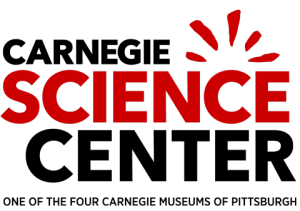Designated Supervisor User Manual
You have been identified as the Designated Supervisor for a student who has registered for the fair. Congratulations and thank you for your support of the Pittsburgh Regional Science and Engineering Fair and the students participating in the fair!
Designated Supervisor Role
The Designated Supervisor is the responsible adult who will be providing direct supervision to the student while they are completing their experimentation.
If the experiment is being completed at home, the designated supervisor may be a parent or may be another responsible adult in the household who will be present while the student completes their experiment. This Designated Supervisor will need to sign Form 3: Risk Assessment Form.
If the experiment is being conducted in a regulated research institution, but not under the direct supervision of a Qualified Scientist, the Designated Supervisor may be a graduate student, post-doctoral fellow or other member of the Qualified Scientist’s team who is assigned to supervise the student. This Designated Supervisor will need to sign Form 3: Risk Assessment Form and, depending on the location of the experimentation and topic of the research, Form 2: Qualified Scientist Form, Form 5A/B: Vertebrate Animal Form, Form 6A: Potentially Hazardous Biological Agents Form, Form 6B: Human and Vertebrate Animal Tissue Form and/or Form 1C: Regulated Research Institution/Industrial Setting Form.
As stated by the Society for Science and the Public’s International Rules: Guidelines for Science and Engineering Fairs 2020–2021 (https://www.societyforscience.org/isef/international-rules/):
“The Designated Supervisor (DS) Qualifications:
• Does not need an advanced degree
• Must be familiar with the student’s project and agree to any training necessary
• May also serve as the Adult Sponsor for the project
• If the project involves the use of Vertebrate Animals (where behavior/habitat is influenced by humans), must be knowledgeable about the humane care and handling of the animals
Responsibilities:
• Providing direct supervision of the student experimentation
• Completing the required documentation — the Designated Supervisor box on the Qualified Scientist Form (2) when applicable
• Reviewing and completing the Risk Assessment Form (3) when needed”
Logging In
In order to sign the required form(s) for the student(s), you will need to log in to your account at https://www.STEMisphere.org/PRSEF.
An account was created for you when the student or their Adult Sponsor added your name to the student’s profile. You should have received an email from CSC STEMisphereInfo at STEMisphereInfo@CarnegieScienceCenter.Org with information about how to log in. Please check your junk mail folder if you do not see this email.
Use the link in the email to set your password and log in. If you cannot find the email, navigate to https://www.STEMisphere.org/PRSEF and use the Forgot your Password link to generate a new email.
Accessing Forms
Once you have logged in, you should see the name(s) of the student(s) whose project(s) you have been assigned to and their project title(s). If you have been assigned to more than one student’s project, you will see them each listed on your screen. For each student, you should also see a list of forms each designated by a number. To open a form, click on the number of the form inside one of the colored boxes next to the student’s name.
The Designated Supervisor may see and need to sign any of the following forms: Form 2: Qualified Scientist Form, Form 3: Risk Assessment Form, Form 5A/B: Vertebrate Animal Form, Form 6A: Potentially Hazardous Biological Agents Form, Form 6B: Human and Vertebrate Animal Tissue Form and/or Form 1C: Regulated Research Institution/Industrial Setting Form.
Form 2: Qualified Scientist must be signed by a Designated Supervisor when 1) the student is working in a Regulated Research Institution and 2) the Qualified Scientist has assigned another individual to directly supervise the student’s project.
A Regulated Research Institution is defined as an industrial laboratory, professional research/teaching institution which is regularly inspected by the USDA, college/university laboratory, hospital or medical center, federal laboratories like those of the NIH, CDC and veteran’s affairs, pharmaceutical and biotechnology company laboratory, or research institution that utilizes research animals which is not covered by the Animal Welfare Act but has an operational Institutional Animal Care and Use Committee (IACUC) and is in compliance with U.S. federal laws.
A Qualified Scientist is defined as a person who has earned a doctoral/professional degree in a scientific discipline related to student’s area of research and/or has extensive experience and expertise in the student’s area of research and is thoroughly familiar with the regulations that govern the student’s area of research.
Form 3: Risk Assessment Form must be signed by a Designated Supervisor when 1) the experiment is being completed at home or in the field under the supervision of an adult. In this case, the designated supervisor may be a parent or may be another responsible adult; or 2) the experiment is being conducted in a regulated research institution, but not under the direct supervision of a Qualified Scientist. In this case, the Designated Supervisor may be a graduate student, post-doctoral fellow or other member of the Qualified Scientist’s team who is qualified to supervise the student and who has been chosen by the Qualified Scientist to do so.
A Regulated Research Institution is defined as an industrial laboratory, professional research/teaching institution which is regularly inspected by the USDA, college/university laboratory, hospital or medical center, federal laboratories like those of the NIH, CDC and veteran’s affairs, pharmaceutical and biotechnology company laboratory, or research institution that utilizes research animals which is not covered by the Animal Welfare Act but has an operational Institutional Animal Care and Use Committee (IACUC) and is in compliance with U.S. federal laws.
A Qualified Scientist is defined as a person who has earned a doctoral/professional degree in a scientific discipline related to student’s area of research and/or has extensive experience and expertise in the student’s area of research and is thoroughly familiar with the regulations that govern the student’s area of research.
Form 5A/B: Vertebrate Animal Form must be signed by a Designated Supervisor when a student’s project involves the use of vertebrate animals. Form 5A is used when the research is conducted outside of a Regulated Research Institution. The Designated Supervisor is the individual who will directly supervise the student during their experiment and will take primary responsibility for the care of the animals during the study.
The Designated Supervisor may be a parent if the project is being conducted in the student’s home, a teacher if the experiment is being conducted at school, or another responsible adult if the experiment is being conducted in the field.
If the vertebrate animal study is being conducted in a Regulated Research Institution, Form 5B Vertebrate Animal Form may be signed by the Qualified Scientist.
A Regulated Research Institution is defined as an industrial laboratory, professional research/teaching institution which is regularly inspected by the USDA, college/university laboratory, hospital or medical center, federal laboratories like those of the NIH, CDC and veteran’s affairs, pharmaceutical and biotechnology company laboratory, or research institution that utilizes research animals which is not covered by the Animal Welfare Act but has an operational Institutional Animal Care and Use Committee (IACUC) and is in compliance with U.S. federal laws.
If the experiment is being conducted in a regulated research institution, but not under the direct supervision of a Qualified Scientist, a Designated Supervisor may sign this form. In this case, the Designated Supervisor may be a graduate student, post-doctoral fellow or other member of the Qualified Scientist’s team who is qualified to supervise the student and who has been chosen by the Qualified Scientist to do so.
Form 6A: Potentially Hazardous Biological Agents Form must be signed by a Designated Supervisor when 1) the student is working with potentially hazardous biological agents in a Regulated Research Institution and the Qualified Scientist associated with the project is not directly supervising the student. The Qualified Scientist may appoint another person as a Designated Supervisor. The Designated Supervisor is the person who is providing direct on-site supervision to the student while they complete their project. Or 2) the student is working with potentially hazardous biological agents outside of a Regulated Research Institution under the supervision of their Adult Sponsor or other adult who is familiar with the project and is able to provide necessary training and safety measures. The adult providing the direct supervision to the student may fill the role of Designated Supervisor.
A Regulated Research Institution is defined as an industrial laboratory, professional research/teaching institution which is regularly inspected by the USDA, college/university laboratory, hospital or medical center, federal laboratories like those of the NIH, CDC and veteran’s affairs, pharmaceutical and biotechnology company laboratory, or research institution that utilizes research animals which is not covered by the Animal Welfare Act but has an operational Institutional Animal Care and Use Committee (IACUC) and is in compliance with U.S. federal laws.
A Qualified Scientist is defined as a person who has earned a doctoral/professional degree in a scientific discipline related to student’s area of research and/or has extensive experience and expertise in the student’s area of research and is thoroughly familiar with the regulations that govern the student’s area of research.
Form 6B: Human and Vertebrate Animal Tissue Form must be signed by a Designated Supervisor when 1) the student is working with human and vertebrate tissue in a Regulated Research Institution and the Qualified Scientist associated with the project is not directly supervising the student. The Qualified Scientist may appoint another person as a Designated Supervisor. The Designated Supervisor is the person who is providing direct on-site supervision to the student while they complete their project. Or 2) the student is working with human and vertebrate tissue outside of a Regulated Research Institution under the supervision of their Adult Sponsor or other adult who is familiar with the project and is able to provide necessary training and safety measures. The adult providing the direct supervision to the student may fill the role of Designated Supervisor.
A Regulated Research Institution is defined as an industrial laboratory, professional research/teaching institution which is regularly inspected by the USDA, college/university laboratory, hospital or medical center, federal laboratories like those of the NIH, CDC and veteran’s affairs, pharmaceutical and biotechnology company laboratory, or research institution that utilizes research animals which is not covered by the Animal Welfare Act but has an operational Institutional Animal Care and Use Committee (IACUC) and is in compliance with U.S. federal laws.
A Qualified Scientist is defined as a person who has earned a doctoral/professional degree in a scientific discipline related to student’s area of research and/or has extensive experience and expertise in the student’s area of research and is thoroughly familiar with the regulations that govern the student’s area of research.
Form 1C: Regulated Research Institution/Industrial Setting Form must be signed by a Designated Supervisor after the research has taken place when the experiment was conducted in a regulated research institution, but not under the direct supervision of a Qualified Scientist. In this case, the Designated Supervisor may be a graduate student, post-doctoral fellow or other member of the Qualified Scientist’s team who is qualified to supervise the student and who has been chosen by the Qualified Scientist to do so.
A Regulated Research Institution is defined as an industrial laboratory, professional research/teaching institution which is regularly inspected by the USDA, college/university laboratory, hospital or medical center, federal laboratories like those of the NIH, CDC and veteran’s affairs, pharmaceutical and biotechnology company laboratory, or research institution that utilizes research animals which is not covered by the Animal Welfare Act but has an operational Institutional Animal Care and Use Committee (IACUC) and is in compliance with U.S. federal laws.
A Qualified Scientist is defined as a person who has earned a doctoral/professional degree in a scientific discipline related to student’s area of research and/or has extensive experience and expertise in the student’s area of research and is thoroughly familiar with the regulations that govern the student’s area of research.
For a detailed description of each form, its purpose, when it is required, who may complete it and who may sign it, see the ISEF Form Guide at https://www.PRSEF.STEMisphere.org.
Form Status
All forms will remain in Required (red background) or Pending Completion status (yellow background) until the required fields have been completed and the appropriate signatures have been added successfully. Once the required information and signatures have been added, the form will be promoted to Ready for Review status (purple).
Filling multiple roles
If you are filling more than one role for one student (parent and designated supervisor for example) or if you are filling different roles for different students (designated supervisor for one and qualified scientist for another), you will need to switch between profiles to access all of the applicable forms. To move between profiles, look to the horizontal menu bar just below the black and white speckled area on your screen. Click on “Registrations / Forms” and then on “Manage Role Name Forms” to switch to a new role.
Reviewing the project
Before you sign any form which has been assigned to you, review the student’s research plan and the responses to the questions on the form with them. The research plan should include a rationale (background research), a research question, a hypothesis, a procedure, a risk analysis, a proposed method of data analysis and a bibliography with at least five (5) sources.
Once you are familiar with the project, review the PRSEF rulebook and the ISEF rulebook. Both can be found at http://carnegiesciencecenter.org/educators/stemcenter-science-fair-teachers-and-students/.
Completing Form 3
This form is required for ALL projects regardless of the subject and division. It is designed to uncover any risks to the safety of the student or others involved in the project and to ensure that those risks are addressed in a way which ensures the safety of all parties. This form is required for all projects regardless of the level of risk involved.
The student researcher should complete this form. Detailed instructions for completing each question on this form can be found on STEMisphere.org/PRSEF. The Designated Supervisor may provide guidance and assistance. Encourage the student to remember that all activities, and all experiments, involve some risk. Even simple everyday activities involve some risk. For example, taking a shower in the morning before going to school involves the potential risk of burns if the water is too hot or slipping on a wet surface.
If the student has responded “N/A” or similar to all of the questions, please do not sign the form. The Scientific Review Committee will not approve the project if the form is completed in that manner. Instead, work with the student to approach the question of risk from a position of curiosity. Some risk can be found in just about any project.
This form will remain in Pending Completion status until all required signatures are provided.
Completing and signing other forms
Provide information: Open each form which is assigned to you by clicking on the red or yellow box with the number of the form. See the form descriptions and instructions for each question for help completing each form.
Save and Sign Form: Once you have completed each form, click on the Sign Form button. On Form 6A and 6B, you may need to click on Save Form, then re-open the form and click on Sign Form.
Confirm responses: Wait for the system to load the form in the gray box before continuing. Review the form which has loaded in the gray box and confirm that your responses were recorded correctly. Click in the box next to the word “Yes” to confirm your responses.
Add signature: Click in the space below the word Signature and above the signature line. Use your mouse or touch pad to add your electronic signature in the box. If your signature is not legible, click on the Clear button to try again. If you are happy with your signature, click on the Accept button. You must click on the Sign button to confirm your signature.
Date of Approval: Enter the date when the idea for the project was first reviewed with the student researcher and experimentation was approved by the Qualified Scientist or Designated Supervisor. This does not need to be today’s date. The Qualified Scientist or Designated Supervisor must review and approve the project before the student begins experimentation.
Experiments which were completed over the summer or for a school science fair will have experimentation dates which are before the date this form was completed. Use this field to enter the date the project was reviewed and approved by the Qualified Scientist or Designated Supervisor, not today’s date. The Date of Approval must be before the tentative start date or actual start date listed by the student on Form 1A.
These forms will remain in Pending Completion status until all required signatures are provided.
How to check your signature
Once you have completed and signed the form, click on “Return to forms manager” in red font or on “Registration / Forms” and then on “Manage Supervisor Forms” on the horizontal menu bar just below the black and white speckled area. Click on the form you want to check, then Look for the red Form Status box on the right side of the screen. Click on “View PDF of Form”. Check to be sure your signature appears in the right place.


